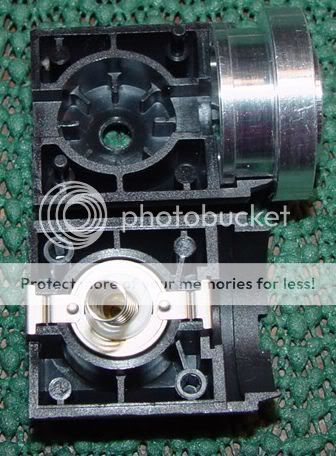JimmyM
Flashlight Enthusiast
I'm starting this thread to see about feedback/design ideas for a Mag "C" body size version of my PWM regulator.
This is not a purchase/signup thread. When the time comes, a new thread will be started in the appropriate area.
This too is a spin-off of the design work that Alan_b, wquiles, myself, and others have been working on. The basic theory, design, software, etc have been developing for a while over in this thread. HERE
This version will be similar to the JM-PhD-D1 (Part1, Part2) in that it uses the same microcontroller and PWM just in a smaller diameter.
I have a schematic done and a PCB design in the works.
I'd like to get some feedback regarding feature set, operation, etc
Since this design will be incorporated into an existing Mag switch. You have 2 options.
1) The internal circuit is completely dead when off and it will only leak as much current as the MOSFET itself will allow. That's in the area of a few nano or micro amps. However, you're limited to just ON or OFF operation (with softstart of course).
2) The internal circuitry is live (but will sleep). This will leak more current due to the voltage sampling divider and the circuitry using some small amount of current. In the area of a few hundred micro amps. But this will allow things like multiple levels.
However, this could just be made software dependent like the JM-PhD-D1. It could be wired for ON/OFF operation with one software version or wired for multi-function control using a different software version.
Also, there is the subject of adjustability. There is no room for adjustment POTs so all voltage adjustments will be made by reprogramming.
Voltage limits will be the same as the JM-PhD-D1. 40V max with similar power handling.
Now there's the big question of mounting. The PCB I'm working on is 26mm in diameter. I've placed 2 holes in the PCB to accomodate the screws/posts of a KIU ceramic socket.
So I thought it could just be mounted to the top of an existing C body switch after the post and post mount has been removed. This way 2 holes would have to be drilled into the top of the switch body to accomodate a pair of short posts. The PCB would be placed on top of the posts. The socket posts could then just be screwed into the ends of the posts under the PCB.
I've designed the PCB to keep the components facing the switch. Heat might be tough to deal with.
I'm really open to suggestions here. Of course any updates/fixes that come out of the JM-PhD-D1 testing will be incorporated into the C body design.
Thanks, all.
This is not a purchase/signup thread. When the time comes, a new thread will be started in the appropriate area.
This too is a spin-off of the design work that Alan_b, wquiles, myself, and others have been working on. The basic theory, design, software, etc have been developing for a while over in this thread. HERE
This version will be similar to the JM-PhD-D1 (Part1, Part2) in that it uses the same microcontroller and PWM just in a smaller diameter.
I have a schematic done and a PCB design in the works.
I'd like to get some feedback regarding feature set, operation, etc
Since this design will be incorporated into an existing Mag switch. You have 2 options.
1) The internal circuit is completely dead when off and it will only leak as much current as the MOSFET itself will allow. That's in the area of a few nano or micro amps. However, you're limited to just ON or OFF operation (with softstart of course).
2) The internal circuitry is live (but will sleep). This will leak more current due to the voltage sampling divider and the circuitry using some small amount of current. In the area of a few hundred micro amps. But this will allow things like multiple levels.
However, this could just be made software dependent like the JM-PhD-D1. It could be wired for ON/OFF operation with one software version or wired for multi-function control using a different software version.
Also, there is the subject of adjustability. There is no room for adjustment POTs so all voltage adjustments will be made by reprogramming.
Voltage limits will be the same as the JM-PhD-D1. 40V max with similar power handling.
Now there's the big question of mounting. The PCB I'm working on is 26mm in diameter. I've placed 2 holes in the PCB to accomodate the screws/posts of a KIU ceramic socket.
So I thought it could just be mounted to the top of an existing C body switch after the post and post mount has been removed. This way 2 holes would have to be drilled into the top of the switch body to accomodate a pair of short posts. The PCB would be placed on top of the posts. The socket posts could then just be screwed into the ends of the posts under the PCB.
I've designed the PCB to keep the components facing the switch. Heat might be tough to deal with.
I'm really open to suggestions here. Of course any updates/fixes that come out of the JM-PhD-D1 testing will be incorporated into the C body design.
Thanks, all.
Last edited:



 ] under control will be worth it.
] under control will be worth it.




